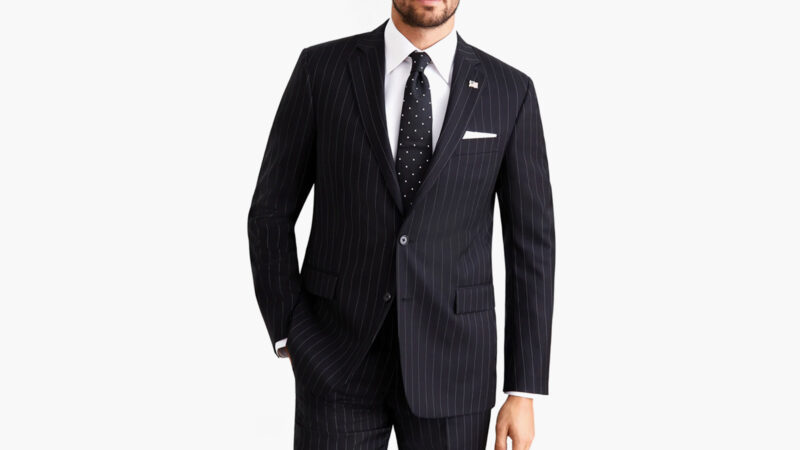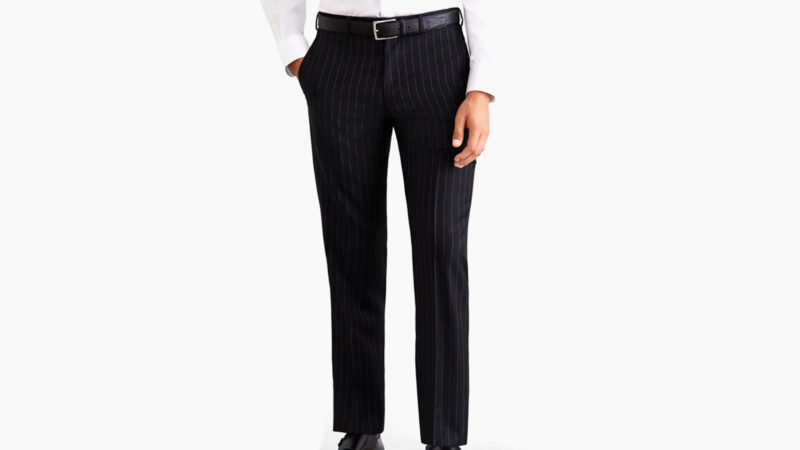As one of the most influential and revered jazz musicians of the 20th century, Miles Davis was, and remains, an icon. He was effectively the father of jazz fusion, often releasing exploratory, challenging pieces that pushed boundaries and reimagined popular sounds through his own unique lens.
Spearheading that kind of movement alone was enough to catapult him to global superstardom, but Davis was equally celebrated—at least in sartorial circles—for his polish and panache. The musician had a knack for pulling together exquisite ensembles. One would expect such grace and class of a world-renowned jazz performer, of course, but Davis had a particular interest in style that extended well beyond a mere interest in neatly pressed trousers and tops.
Looking Forward
His was a dress sense that extolled the best virtues of the decades he served. There were the sleeker and simpler pieces of the 1940s followed, decades later, by the funkier getups he embraced in the 1970s. They contribute to a beautiful catalog of looks that, even today, men aspire to make their own. In fact, the exploration of Davis’s prodigious style is as remarkable as that of his indiscriminate sounds.
Indeed, for Davis, fashion was about making a statement. It was fundamental to his art, his presence, his charisma. It served to convey a certain message—yet there was also an underlying sense that the performer was far ahead of his time. His dress sense was as adventurous and progressive as his music.
Sharper Image
Davis always held a certain affinity for the dapperly dressed of the world. At an early age, he was impressed by his mother’s unforgettable sense of the style. “She had mink coats, diamonds. She was a very glamorous woman who was into all kinds of hats and things, and all my mother’s friends seemed just as glamorous to me as she was,” he wrote in his autobiography, Miles: The Autobiography. “She always dressed to kill.”
Davis always held a certain affinity for the dapperly dressed of the world. At an early age, he was impressed by his mother’s unforgettable sense of the style.
It seemed, then, that looking good was simply in his genes. Yet he still drew inspiration from the leading men of the day—entertainers and visionaries like Fred Astaire, Dexter Gordon, and Cary Grant shaped his impeccable taste. Davis credited fellow jazz musician Coleman Hawkins, one of his role models, for influencing not just his music but also his fashion sense. “Bean” as Hawkins was known, would often give the younger musician trendy clothing.
Image was important, and Davis put considerable energy into making sure that his attire looked as exquisite on his frame as it did on the hanger. He drew discipline from boxing, another world in which he was deeply ensconced. Although Sugar Ray Leonard he wasn’t, he was inspired by the legend’s commitment to health and physique—it was, in fact, the boxer’s fastidious mindset and strict devotion to fitness that compelled Davis to beat his heroin addiction.
Adaptation was key to his finesse. He didn’t shy away from experimentation, adopting it instead as part of his repertoire. Creating fresh looks from the ground up meant shying away from the tried-and-true and taking a more unexpected approach. He was known to assemble, often brow-raising outfits—yet somehow, they always worked.
It was largely in the way that Davis carried himself. The man made the clothes, and not the other way around. He was simply hip and confident, two sharp traits that played vital roles in his ability to present himself with the utmost sense of fashion. What set Davis apart from his peers was sheer eclecticism. If jazz fusion was his great achievement, approaching fashion from an enterprising point of view was his other legacy.
Memorable Looks
Famed Japanese designer, Kohshin Satoh, created a lush blank mink coat made elevated with purple fox fur accents. The interior, naturally, featured a leopard print. It was a gift from Satoh to Davis, who had assisted in modeling the designer’s 1987 collection with Andy Warhol at New York’s Tunnel Club. He even wore Satoh’s wares when he visited the White House.
His earliest looks were heavily tailored, with a country club flair about them that played well on the stages of the ’40s and ’50s.
He took to retooling his Brooks Brothers suits, often procured at pawn shops, by slashing the lapels to replicate looks initially made famous by the Duke of Windsor. His earliest looks were heavily tailored, with a country club flair about them that played well on the stages of the ’40s and ’50s.
By the ’60s, he had moved on to sleeker, more sophisticated styles—think crisply cut menswear and pongee suits. Both were nods to Italian and French styles of the day, looks that felt right at home on stage. He was fond of the pongee suit in neutrals like beige and gray, lending him a rakish presence that exuded constant charm. Even post-performance, he was known to unwind in relaxed seersucker suits, crisp white shirts, and loafers handmade with doeskin.
Even post-performance, he was known to unwind in relaxed seersucker suits, crisp white shirts, and loafers handmade with doeskin.
The ’70s, what with its next-level funk, never met a bolder dresser than Davis, who took the decade’s trends and amplified them to the hilt. Everything looked better and sharper on Davis, who could be found lounging in purple bell bottoms, chunky white heels, and leather vest—sans shirt, natch.
Yet the styles that resonated so well across the world weren’t quite met with the same enthusiasm when he visited his East St. Louis hometown. He was often teased for his flair and appreciation for imported attire. The defiant garb almost seemed foreign, often tinged with avant-garde elements that set them apart from more common streetwear of the time.
Miles Personified
That Davis was as much a style icon as a trumpeting genius comes as no surprise upon a glance at his vast catalog of looks. Bringing those looks to life was no sweat for the coolest guy in the room, but may be tougher for those whose fashion sensibilities are decidedly more low-key and understated. Yet who’s to say you can’t make them your own?
Bringing those looks to life was no sweat for the coolest guy in the room, but may be tougher for those whose fashion sensibilities are decidedly more low-key and understated.
To wit, there were some looks that were considerably less complex and more approachable—and certainly worth the exploration for those interested in graduating from the less-luxe suspects in the closet, like T-shirts and jeans. How did Davis do casual? Take a cue from one of his favorite combinations of the ’60s, which featured pieces like polo shirts and bomber jackets. It was simple, yet exuded assurance. The effect was offhand, yet seemed thoughtful in its execution. The Paige Elliot Bomber Jacket is at once refined and suave, making it the ideal partner for anything from denim to chinos.
Naturally, no one could rock a suit with the same refinement as Davis. He was a master of the double-breasted cut. His was what today’s gentleman may consider a contemporary cut—a man ahead of his time, indeed, sporting the types of clean lines and exquisite tailoring so highly demanded by the 21st-century set. Slender pinstripes added touches of contrast, lending his stage looks an unmatched debonair quality. As suiting goes, the Brooks Brothers Regent Fit Two-Button Stripe 1818 is a winning choice for replication.
The grooviest decade of all was easily one of the most winning periods of Davis’s illustrious career. He released the influential Bitches Brew in 1970 and seized countless opportunities to break the barriers of style. It was, after all, a period of experimentation across the board. That Davis found opportunity to deviate from type more than he did in the past only proved his fearless streak.
So ingrained was the idea of using fashion to make a statement, in fact, that he wore a lush velvet jacket and a double-strand necklace to Jimi Hendrix’s funeral.
So ingrained was the idea of using fashion to make a statement, in fact, that he wore a lush velvet jacket and a double-strand necklace to Jimi Hendrix’s funeral. Accompanying those were a suavely knotted scarf and a studded belt. Davis was no stranger to velvet: it made frequent appearances throughout his life. At a young age, he requested that his mother add velvet collars to his jackets. That he sported one at a funeral—and on stage, and to dinner, and so on—is no surprise. One that closely emulates Davis’s beloved purple velvet jacket is this outstanding Ralph Lauren Purple Basic Cotton Velvet Jacket.
Hendrix had some enduring influence on Davis, whose style in subsequent years could only be described as unabashedly flamboyant. It was cool, fresh, and a bit bohemian. He abandoned his sense of conservatism—carefree as it was—in favor of a far looser, almost dysfunctional manner of dressing. There was swagger the likes of which no one in the entertainment industry had witnessed. Who but Davis could get away with wearing a turban?
He took full advantage of ’80s drama and excessiveness, taking to the stage in pieces fit for the decade’s most elite. Baggy, patterned pants were the norm, along with glitzy toppers like the Dsquared Single-Breasted Blazer. Cropped neon blazers with shoulder-hugging padding? Wildly patterned blouses? A few pops of Issey Mayake thrown in for good measure? It was all there, wonderfully mixed together in the type of hodgepodge manner that only Davis could achieve.
Redefinition was key to his style. He wasn’t content to remain stagnant—in any area of his career. From art to fashion, Davis embraced man’s ability to evolve and grow and discover. His understanding of different scenes and cultures emboldened him to explore uncharted style territories. The influences were vast, and the results unforgettable.



